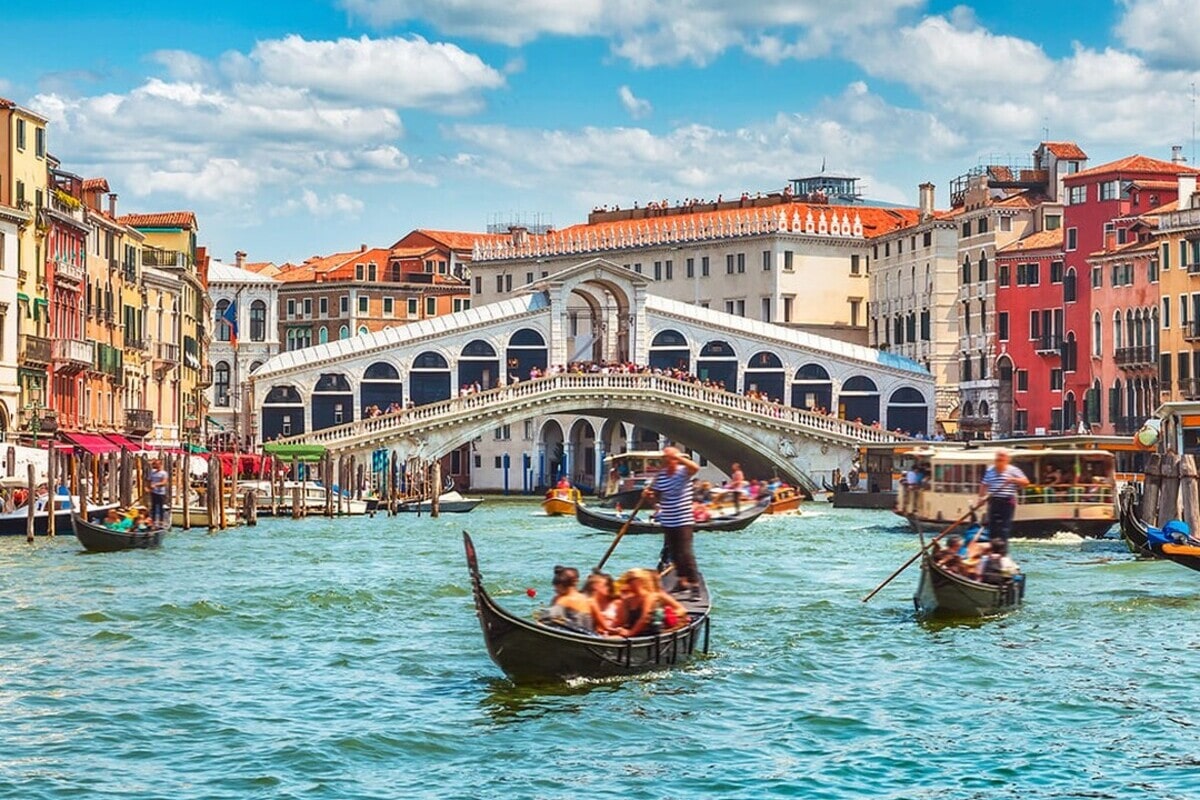Venice is one of the most picturesque and extraordinary cities in the world. Built on water, surrounded by canals and bridges, it captivates visitors with its romantic atmosphere and unique architecture. This city is not only full of charm but also rich in historical and cultural heritage. Venice hides many fascinating aspects that most people are unaware of. Below is a collection of the most interesting and informative facts about Venice that you may not know.
- Venice was built on 118 islands connected by over 400 bridges. These islands are located in the lagoon of the Adriatic Sea and have been inhabited since the 5th century. Due to its location, the city developed an infrastructure without traditional roads or cars.
- There are no standard streets for cars in Venice, as all transportation takes place via water. The main forms of transport are water buses, private boats and the famous gondolas. The only way to move on land is by walking, which creates a quiet and romantic environment.
- Venice is slowly sinking year by year. In the past century, water levels have risen by more than 20 centimeters, posing a serious threat to the city’s architectural heritage. To combat this, the MOSE project was developed to protect Venice from flooding.
- Venice hosts one of the oldest and most prestigious film festivals in the world. The Venice Film Festival was established in 1932 and ranks among the top three festivals alongside Cannes and Berlin. Each year, it attracts renowned directors, actors and thousands of film lovers.
- Venetian architecture combines Byzantine, Gothic and Renaissance styles. One of the city’s icons is St. Mark’s Basilica, whose facade is adorned with mosaics and columns brought from across the Mediterranean. Every architectural detail in Venice has historical or artistic significance.
- Venice is home to one of Italy’s oldest universities — Ca’ Foscari University, founded in 1868. The university is located in a historic palace along the Grand Canal. It is a leading institution in the fields of foreign languages and economics.
- Every year before Lent, the famous Venice Carnival takes place. The main feature of the carnival is the use of elaborately decorated masks, which have roots in local theatrical and social traditions. During the carnival, the city transforms into a stage with costumes, parades and open-air performances.
- Venice is famous for its glass production, especially on the island of Murano. The tradition of glassmaking here dates back over a thousand years, with each piece crafted by hand using ancient techniques. Murano glass is now a globally recognized luxury brand.
- The Grand Canal is Venice’s most iconic waterway, stretching for more than 3 kilometers. It winds through the city in an S-shape and divides it from north to south. Along its banks stand majestic palaces that once belonged to wealthy merchant families.
- La Fenice opera house was the first public opera theatre in the world. It opened in 1792 and its name, meaning Phoenix, is symbolic, as the building burned down several times but was always rebuilt. Today it remains one of the most important opera venues in Italy.
- Venice does not have a centralized water supply system. Drinking water is brought in through special channels or delivered to the city. Historically, rainwater was collected in special reservoirs known as cisterns.
- Although Venice is a major tourist destination, its resident population is shrinking. Rising living costs, infrastructure challenges and mass tourism have driven many locals to move away. Currently, fewer than 50,000 people live in the city, compared to over 100,000 a few decades ago.
- The city is home to numerous historic libraries, including the famous Biblioteca Marciana. It contains rare manuscripts, engravings and printed works, including texts by Ptolemy, Homer and Cicero. The library is located near St. Mark’s Square and is a treasure for history lovers.
- In the Middle Ages, Venice was a powerful maritime republic controlling trade throughout the Mediterranean. Its navy was among the strongest in Europe. The city played a central role in connecting Eastern and Western trade routes.
- There are no skyscrapers in Venice, and building height is strictly regulated. These rules help preserve the traditional skyline and visual harmony of the city. This architectural coherence is one of the reasons Venice is listed as a UNESCO World Heritage Site.
These fascinating facts about Venice show that the city is not just a beautiful destination but a treasure trove of history, culture and human ingenuity. Its canals, palaces, music and traditions create an atmosphere like no other. Venice is more than just a location on the map — it is a world with its own rhythm and soul. The more we learn about it, the more we become enchanted by its magic.





